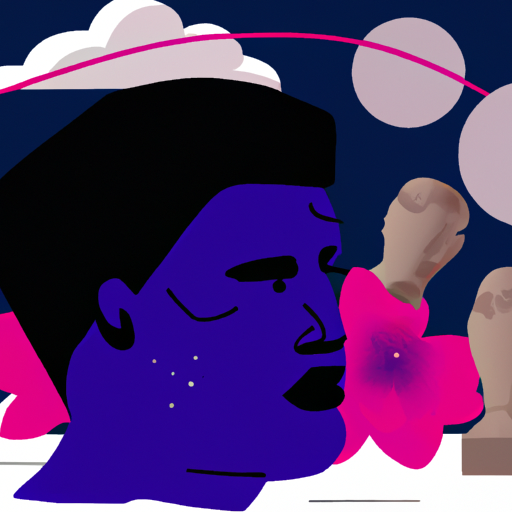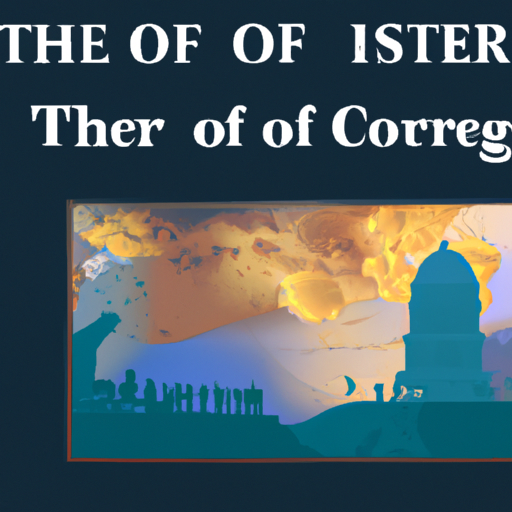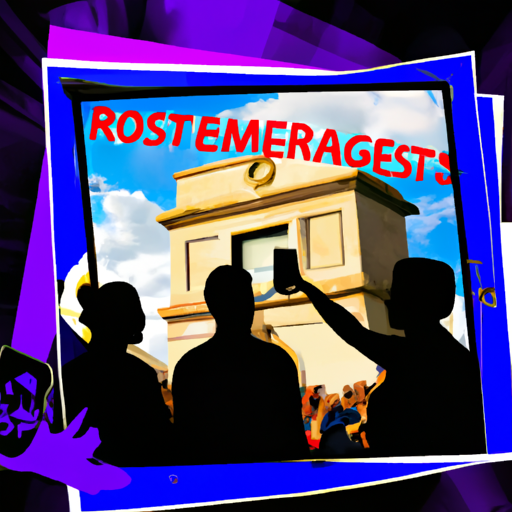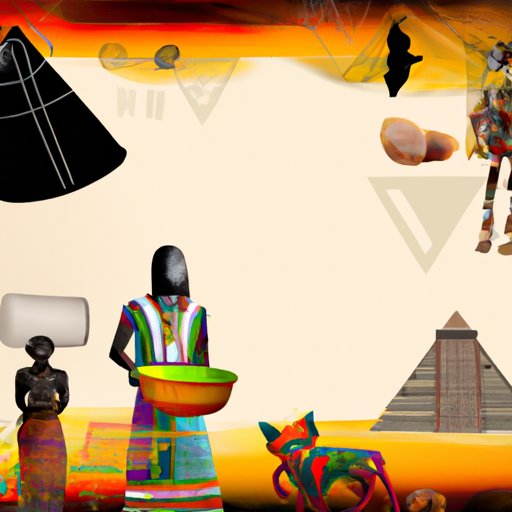A Look at the History of Rome’s Fall
Unearth the enigma of Rome’s ultimate collapse and explore how one of the most influential empires in history met its demise. Uncover the secrets of a once-mighty reign that has left its indelible mark on history and ponder how such a powerful force could be extinguished. Delve into the past and uncover the answers to questions that have puzzled historians for centuries.

For centuries, an unfathomable mystery has befuddled the minds of historians. How could a grandiose empire, one that left an indelible mark on civilization, be extinguished? Now is your opportunity to embark on a journey through time and uncover the truth behind Rome’s collapse. Unearth the facts and discover how this once-mighty reign met its end. Investigate the past and unlock the answers that have long been hidden from us.
.
Introduction

A perplexing and tumultuous event, the downfall of the Roman Empire has been a subject of debate for centuries. While there is general consensus that a combination of both internal and external pressures were at play, the exact cause remains uncertain. Political corruption, economic downturns, and civil unrest within Rome were compounded by powerful external forces such as Germanic tribes, Huns, and the ascendancy of Christianity. Ultimately these factors combined to weaken Rome’s strength until it finally fell in 476 CE.
– Exploring the Historical Causes of the Fall of Rome
An enigma of the ages, the collapse of the Roman Empire remains a topic of intense scrutiny. Numerous theories have been proposed to explain its downfall, yet it is still difficult to pinpoint an exact cause. Investigating what brought about Rome’s demise can help us comprehend how such a formidable empire could vanish so quickly.
A primary factor in Rome’s decline was economic instability. The Roman economy had become too reliant on slavery, and slaves became increasingly expensive to acquire and maintain. This led to higher taxation levels, which caused people to lose faith in Rome and sparked social unrest. Furthermore, inflation and a decrease in trade further burdened Rome’s finances.
Military inadequacy was another major contributor. To defend its large territories, Rome needed an army that could protect its borders from foreign enemies and put down uprisings within its own boundaries. However, due to political corruption, inadequate training and equipment as well as lack of soldiers, Rome’s military was unable to repel invaders or keep control over its own population.
Finally, cultural changes also played a role in the fall of Rome. As Christianity spread across Europe during this period, it challenged traditional Roman values such as loyalty to the emperor and belief in pagan gods. This shift in religious beliefs weakened morale among citizens and undermined their loyalty towards Rome’s government.
By understanding these historical causes behind the fall of Rome we can gain insight into how civilizations can rise and fall over time. Examining our past mistakes allows us to draw valuable lessons that will help us build more stable societies in the future.
– Examining the Role of Barbarian Invasions in Rome’s Decline
The intricacies of the Roman Empire’s past are mystifying, and its downfall has been attributed to a variety of causes. One important factor that had a significant effect on Rome’s decline was the Barbarian invasions. Barbarian tribes were comprised of Germanic people who migrated from northern and eastern Europe into the Roman Empire in the 4th century AD. These invasions caused disruption to trade, agriculture, and other aspects of life, leading to economic and political instability. Furthermore, these incursions brought destruction to settlements, causing displacement and suffering for many living in the empire. The raids also weakened Rome’s military strength due to depletion of resources and manpower. Consequently, Rome was unable to protect itself against other external threats such as Persian or Muslim armies. Ultimately, Barbarian invasions had a devastating impact on Rome by diminishing its infrastructure and weakening its capabilities militarily.
– Investigating the Impact of Economic and Social Changes on Rome’s Downfall
For centuries, the story of Rome’s fall has been examined in depth, but its causes remain mysterious. Could it be that economic and social shifts were the catalysts for this decline? It appears so, as from the third century AD, Rome was beset by a series of drastic changes that ultimately resulted in its downfall. Inflation, currency debasement, taxation and excessive expenditure all put immense strain on the Roman economy. Simultaneously, disease and warfare caused a population decrease, political power shifted and traditional values became eroded. By considering these economic and social forces at play, we can gain insight into how civilizations may crumble – and how to prevent it from occurring again.
– Analyzing the Political Struggles that Led to Rome’s Collapse
The story of Rome’s downfall is a perplexing and tumultuous one. From its inception as a humble city-state, it rose to become one of the most powerful empires in the world. Yet, its eventual collapse was due to a combination of politics that gradually weakened the Roman state over time. These struggles included internal strife between rival factions, external military threats from neighboring forces, and economic issues such as inflation and currency devaluation. All these components played a role in Rome’s ultimate downfall.
In terms of internal politics, Rome was divided into two main political groups: the patricians and plebeians. The patricians were wealthy landowners who had vast amounts of power while the plebeians were poorer citizens with little say in government affairs. This led to frequent clashes between them which weakened Rome’s overall stability. Furthermore, there were various other aristocratic families vying for power within Rome which further contributed to instability within the state.
Externally, Rome faced numerous military threats from nearby powers such as Carthage and Parthia which weakened their defenses and caused them to lose territory over time. Additionally, they had to deal with recurrent slave revolts which added more problems to their woes. Finally, economic issues such as inflation and currency devaluation exacerbated these difficulties by making it hard for Romans to pay for basic necessities or sustain their standard of living.
All these factors combined resulted in the ultimate collapse of Rome as an empire in 476 CE after nearly 500 years of existence. While no single cause can be attributed to its fall, it is evident that political struggles played an important role in weakening Rome’s ability to defend itself against outside forces and maintain its internal stability. By understanding these struggles we can gain insight into how this great empire eventually fell apart and why it remains an important example in history today.
– Evaluating the Long-Term Consequences of Rome’s History
The enigmatic past of Rome has captivated the minds of many, and its influence is still evident in our present day. Assessing the ramifications of this great civilization’s history can be a challenging endeavor, yet it is vital to comprehend how it has molded our world today. From its political structure to architecture, art and literature, the heritage of Rome has had far-reaching effects for ages.
In terms of politics, the Roman Republic was one of the first forms of representative government in Western civilization. Its system of checks and balances served as a model for future governments around the globe. Additionally, the Roman Empire left an indelible mark on international relations and diplomacy with its alliances and treaties that are still used in modern times.
The architectural accomplishments of Rome have had a lasting effect on cities across Europe and beyond. The Colosseum is an iconic symbol that exemplifies Roman engineering mastery, while aqueducts such as the Pont du Gard are still admired for their intricacy and loveliness. Moreover, many cities have adopted Roman-style urban planning techniques such as grid layouts and public spaces like piazzas and forums.
Rome’s art and literature have also been highly influential throughout history. Its sculptures and mosaics remain some of the most renowned works in all of art history. Similarly, its literature—from Virgil’s Aeneid to Ovid’s Metamorphoses—has motivated countless authors over time with their epic tales full of drama, romance, and tragedy.
In conclusion, examining the long-term consequences of Rome’s history reveals just how deeply entrenched this ancient civilization is in our lives today. From politics to architecture to art and literature, Rome’s legacy persists to shape our world in remarkable ways—and will likely continue to do so for centuries to come.
conclusion

A perplexing and tumultuous event, the fall of the Roman Empire remains shrouded in mystery. Numerous factors have been identified by scholars as playing a part in its downfall; political corruption, military extravagance, internal divisions, environmental destruction and invasion by foreign tribes are all seen to be contributory. These components coalesced to bring about the weakening of the Roman state and its ultimate demise in 476 CE.
.
Some questions with answers
Q1. How did Rome fall?
A1. Rome fell in 476 AD when the last Roman emperor, Romulus Augustulus, was overthrown by a Germanic tribe known as the Ostrogoths.
Q2. What were the causes of Rome’s fall?
A2. The causes of Rome’s fall are complex and numerous, but some of the most commonly cited include political corruption, military overspending, a weakened economy, and invasions by barbarian tribes such as the Visigoths and Vandals.
Q3. Who was responsible for Rome’s fall?
A3. While there is no single person who can be held responsible for Rome’s fall, historians have identified several contributing factors that led to its decline. These include political instability, economic decline, military overspending and overextension, and invasions by foreign enemies.
Q4. What impact did the fall of Rome have on history?
A4. The fall of Rome had a profound impact on world history. It marked the end of the Western Roman Empire and ushered in a period of political fragmentation across Europe that lasted for centuries. It also had an effect on culture, with Roman art and architecture becoming less prominent in Europe after its collapse.
Q5. How long did it take for Rome to fall?
A5. The process of Rome’s decline began in the 3rd century AD and lasted until its final collapse in 476 AD – a period spanning nearly 200 years.





